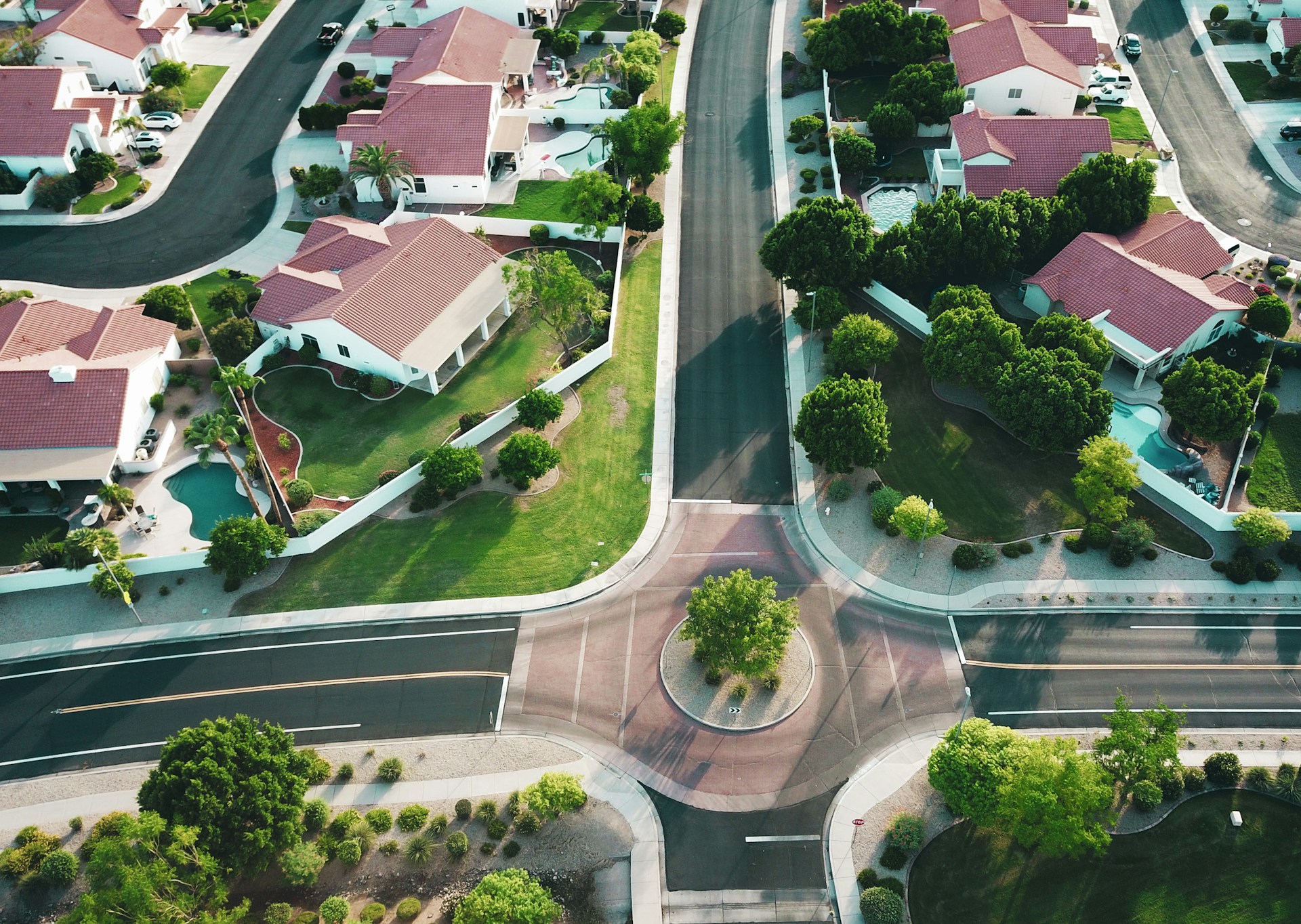How to Implement Green Infrastructure in Suburban Housing Developments?

Green infrastructure is a term that is gaining traction across the globe, especially in the urban areas. It involves the integration of natural systems into an urban environment, often by restoring or mimicking natural processes. This is done in an effort to provide benefits for local communities, enhance property values, improve environmental quality and manage stormwater. In this article, we will explore the role of green infrastructure in suburban housing developments, detailing how you can implement it, and the potential benefits it can bring.
Understanding Green Infrastructure
Before delving into the specifics of implementing green infrastructure in suburban settings, we need to understand what it entails. Green infrastructure includes a wide variety of practices, such as green roofs, permeable pavements, rain gardens, and vegetated swales, all aimed at reusing and managing stormwater in a more environmentally friendly way.
A lire aussi : Can Smart Locks Revolutionize Security in UK Apartment Complexes?
The Environmental Protection Agency (EPA) defines green infrastructure as a cost-effective, resilient approach to managing stormwater that helps enhance water quality and supports community revitalization. Unlike traditional grey infrastructure, which often involves the use of pipes, tunnels, and treatment plants to manage water, green infrastructure uses vegetation and soils to manage water where it falls.
Why Green Infrastructure Matters
Now that we understand what green infrastructure is, let’s delve into why it matters, especially in suburban housing developments. Suburbs are rapidly growing, often with inadequate infrastructure to manage the increased stormwater runoff. This often leads to flooding and degrades the quality of local water bodies.
A lire également : How Can Fintech Enhance the Efficiency of Real Estate Transactions in the UK?
Implementing green infrastructure practices can help manage this stormwater in a way that benefits not just the environment but also the local communities and cities. These practices can help reduce the impact of stormwater on our water systems, improve property values by enhancing the aesthetic appeal of areas, and provide recreational spaces for the community.
Moreover, according to the EPA, green infrastructure can also help improve the resilience of our communities to the impacts of climate change by reducing the heat island effect, improving air quality, and reducing energy demands.
Implementing Green Infrastructure in Suburban Developments
To implement green infrastructure in suburban developments, you need to start by carrying out comprehensive planning and design of the area. This involves identifying opportunities for green infrastructure, developing a plan to implement these projects, and securing funding for them.
First, conduct an assessment of the potential for green infrastructure in the area. This can be done by mapping the existing natural resources, identifying areas of impervious surfaces that can be replaced with permeable surfaces, and locating areas that are prone to flooding.
Once the opportunities have been identified, develop a plan for implementing green infrastructure. This should include the types of practices to be implemented, their locations, and the expected benefits. Additionally, the plan should include strategies for maintaining the infrastructure over the long term.
Securing funding for green infrastructure projects can be challenging, but there are various sources available. These include municipal budgets, grants from federal and state agencies, and public-private partnerships.
Case Studies of Successful Green Infrastructure Implementation
There are numerous examples of successful green infrastructure implementation in suburban developments across the United States. These provide valuable insights into how green infrastructure can be implemented and the benefits it can bring to local communities.
One such example is the Lancaster Green Infrastructure Plan in Lancaster, Pennsylvania. The city has implemented a range of green infrastructure practices, including green roofs, permeable pavements, and rain gardens. These practices have helped the city manage stormwater, reduce flooding, and improve the quality of local water bodies.
Another example is the Twin Cities Metropolitan Area in Minnesota, where the Metropolitan Council has implemented green infrastructure to manage stormwater. The council has used a combination of practices, including permeable pavements, bioswales, and vegetated filter strips. These have helped manage stormwater, enhance water quality, and provide aesthetic and recreational benefits for the local communities.
In conclusion, adopting green infrastructure in suburban housing developments is an effective way of managing stormwater, improving environmental quality, and enhancing the value of properties. With proper planning and design, green infrastructure can be a valuable asset to suburban communities.
Beneficial Impacts of Green Infrastructure on Local Communities
Green infrastructure positively impacts local communities in suburban housing developments in several ways. Firstly, it contributes to stormwater management. Traditional gray infrastructure, such as pipes and concrete channels, quickly transports stormwater to water bodies, often carrying pollutants with it. Green infrastructure, on the other hand, tends to slow down stormwater runoff, increasing the infiltration rate and reducing the amount of water that ends up in our streams and rivers. This helps improve the water quality in local bodies of water and reduces the risk of flooding.
Secondly, green infrastructure can enhance property values. A well-designed and maintained green infrastructure project, like a rain garden or a green roof, can improve the aesthetic appeal of a property, making it more desirable to potential buyers. According to the Environmental Protection Agency, several studies have shown that property values can increase by up to 15% in areas with a high quality green environment.
In addition to managing stormwater and increasing property values, green infrastructure can also provide recreational spaces for local communities. Well-designed green spaces, such as parks and trails, not only contribute to stormwater management but also offer places for community members to relax, play, and connect with nature.
Lastly, green infrastructure can help improve air quality. Trees and other vegetation absorb pollutants from the air, helping to improve air quality and reduce health risks associated with poor air quality.
The Role of Local Governments
Local governments play a pivotal role in the implementation of green infrastructure in suburban housing developments. They have the power to promote, fund, and legislate for green infrastructure projects.
Local governments can start by incorporating green infrastructure into their master plans and zoning ordinances. They can require developers to use green infrastructure practices as part of their site design and can offer incentives such as density bonuses or expedited permit reviews to encourage the use of green infrastructure.
Moreover, local governments can provide funding for green infrastructure projects. Despite the upfront costs, green infrastructure can save municipalities money in the long term by reducing the need for expensive gray infrastructure upgrades and lowering the costs associated with flooding.
Lastly, local governments can provide educational resources and training for homeowners, developers, and contractors on the benefits of green infrastructure and how to design and maintain green infrastructure practices.
Conclusion
Adopting green infrastructure in suburban housing developments is no longer a choice but a necessity. As the impacts of climate change become more evident, and as our suburbs continue to grow, we need to move away from traditional gray infrastructure and towards more sustainable and resilient infrastructure approaches. Green infrastructure offers a promising solution to the challenges of stormwater management, environmental protection, and community revitalization. With the support of local governments, homeowners, and developers, we can transform our suburban neighborhoods into green, sustainable, and resilient communities.
